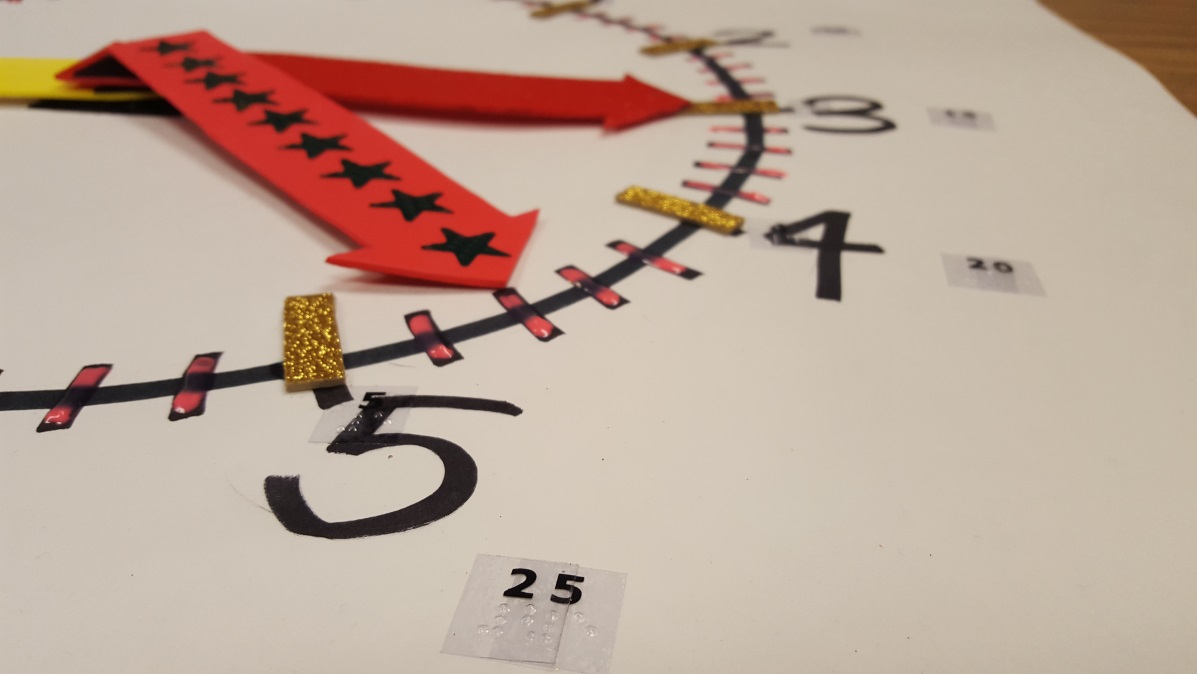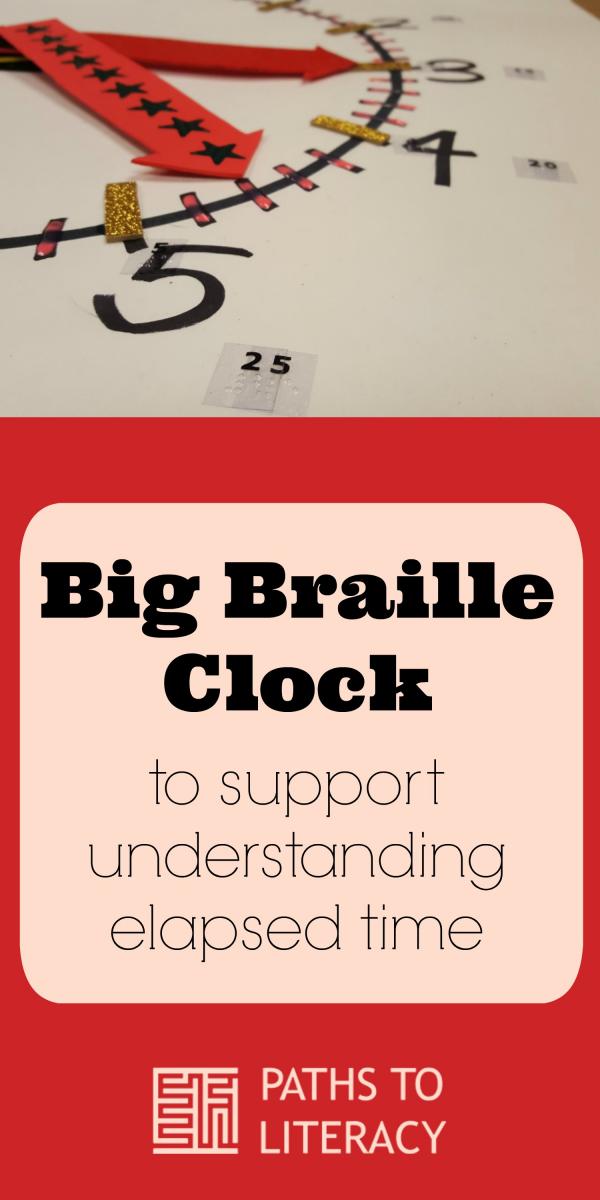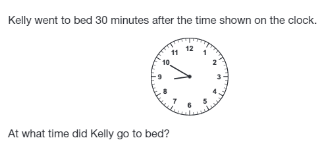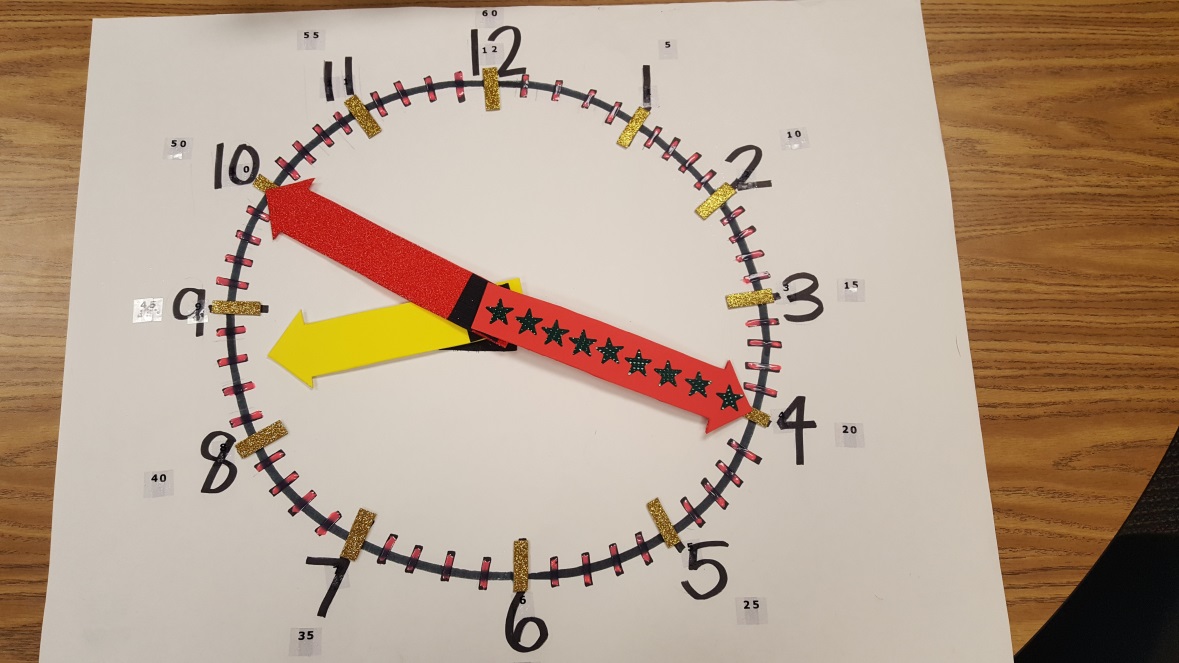Big Braille Clock to Support Understanding Elapsed Time

- Poster Board
- Markers
- Puffy Paint
-
Tactile Paper (Used the APH Feel ‘n Peel Sheets)
- Used for the place markers and the arrows
- Brailled numbers (Used the APH Feel ‘n Peel Stickers)
- Velcro
My student is still in the process of learning what each minute segment of the clock stands for. When telling time on the clock I made, both the hour numbers and their minute equivalents are brailled for her reference. When looking at the problem above, the students are asked to find the time 30 minutes after the time shown. For children with vision, they are able to count 30 minutes ahead and mark the new time, or they have the picture to reference. For a braille student, there is a second minute hand to help them keep their place and give them a tactile visual of the time elapsed since the time given. This way, my student is able to feel the minute hand on the 10, count by 5s in order to reach 30 minutes, and place her additional hand on the 4, which would be 30 minutes after the original time shown.
Using the Velcro gives the student a concrete way of looking at the time because the arrows do not move once placed on the Velcro. This process is also very useful when asked to find elapsed time over hours.






Comments
Clock